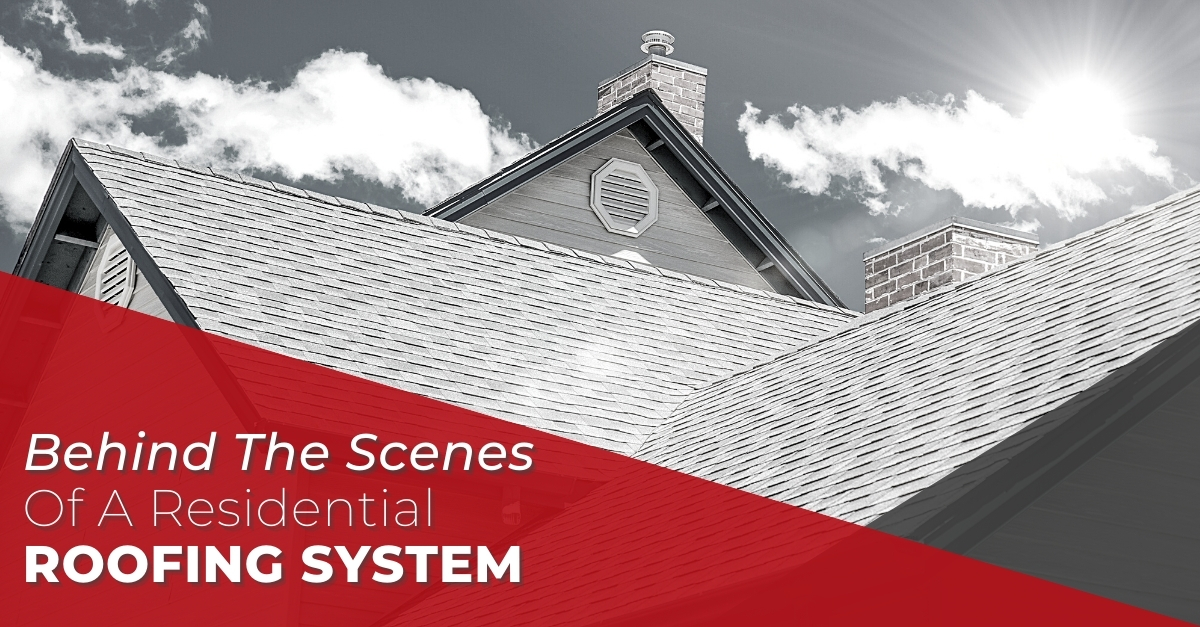
A residential roofing system is more than just the shingles you see from the street. It is a complex system with many important layers of materials, which are installed in the right sequence to protect your home from external elements and severe weather. We’ll break down each layer of your roof system so you can understand what part they play in protecting your home.
Insulation
Insulation is a material designed to reduce overall heat transfer. It is usually installed on the attic floor or above the attic ceiling to create a thermal barrier between the interior and exterior of your home. Proper insulation can reduce unwanted heat gain or loss, significantly decreasing your heating and cooling costs.
Ventilation
Ventilation is a system of intake and exhaust vents which allow for continuous air circulation through natural convection. In hot climates, roof or attic ventilation allows cooler fresh air into the roof and pushes warmer air out. During cold seasons, ventilation helps prevent heat and moisture from accumulating in the attic.
Roof Deck
Most often made out of plywood, the roof deck is the layer which sits on top of the roof trusses and joists. It is the foundation of your roofing system and provides the surface on which other materials are placed.
Water Shield
This self-adhering, self-sealing, waterproof membrane is usually a peel and stick product applied directly to the roof deck. It provides a barrier where water and ice can build up near the roof eaves.
Underlayment
This felt, asphalt-saturated, or rubberized asphalt sheet covers the entire roof deck. The underlayment is a water-resistant and waterproof material which provides an extra layer of protection against water infiltration. It also allows the shingles to lay flatter and more uniformly, reducing the risks of blow-off.
Ridge Vent
At the peak of your sloped roof are ridge vents, which are protected by a ridge cap. Ridge vents have small vent holes which allow warm, humid air to escape from the attic.
Roofing Material
The roofing material is the final layer and what you can see from the outside of your home. There are many types of roofing materials, but asphalt shingles are the most common and most affordable. GAF and Owens Corning are popular brands used on many residential roofs.
They protect your home from external elements and are also an important aspect of your home’s aesthetics.
Flashing
Roof flashing is a thin material usually made of metal, such as galvanized steel, copper, or aluminum. It is used to prevent roof leaks by directing water away from critical areas of the roof. Flashing is installed wherever the roof meets a wall or dormer and around chimneys, vents, skylights, and any features sticking up through the roof.
When it’s time for your next roofing project in the Denver and Fort Collins area, schedule a consultation with the experts at Red Diamond Roofing.


